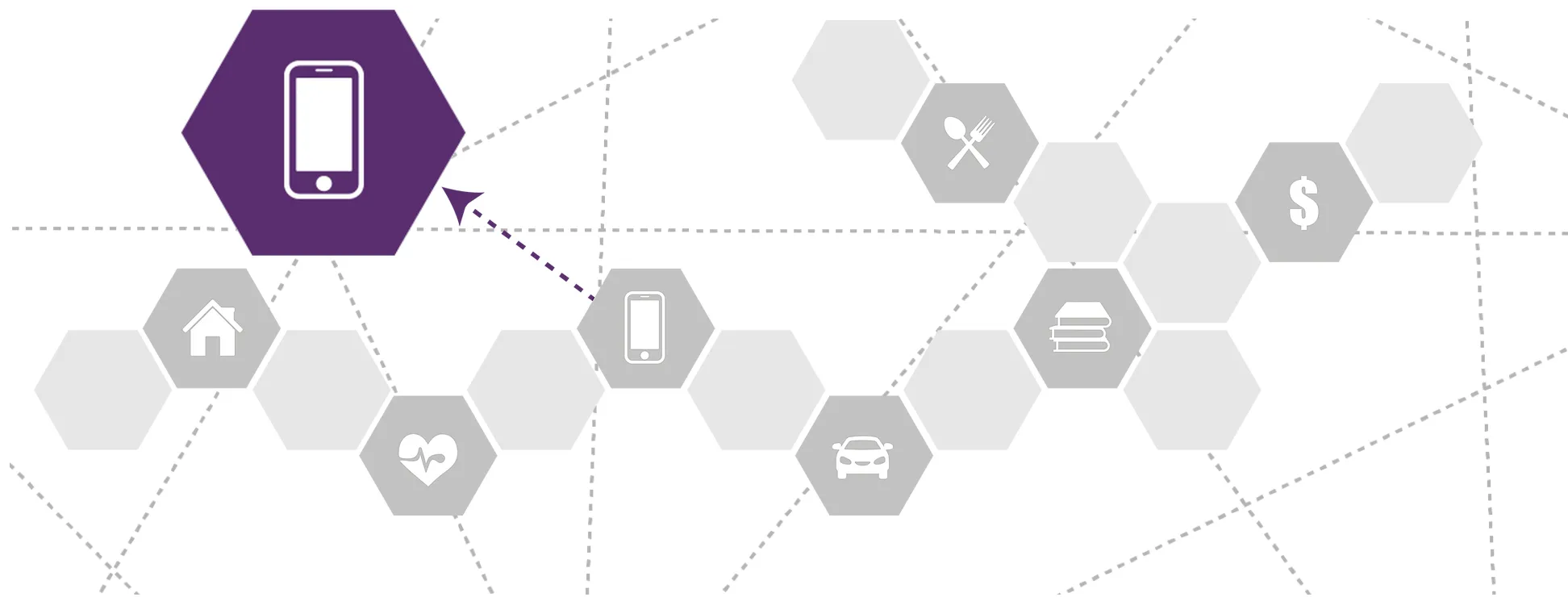
|
Housingclick to view |

|
Health Careclick to view |

|
Child Care and Educationclick to view |

|
Technologyclick to view |

|
Foodclick to view |

|
Taxesclick to view |

|
Transportationclick to view |
||
The Broader Costs of Limited Access to Technology
When ALICE households are not able to benefit from affordable, safe access to broadband technology, communities feel the impact both economically and socially:
-
The "digital divide" perpetuates gaps in education, health care, and earning power: For children, reliable internet access is directly tied to educational outcomes, including test scores, grades, and high school graduation rates. For adults, opportunities for continuing education — more frequently offered online in recent years — depend on reliable internet access.39
The growth of online health education resources and health care services can improve health care access and outcomes, but the impacts will be uneven unless the digital divide based on income, race/ethnicity, and community type is closed.40
Reduced earning opportunities. With reduced means to search for jobs, participate in the gig economy, and take advantage of online training, those without high-speed broadband internet have less earning power. According to one estimate, a speed increase of four megabytes/second was associated with a $2,100 increase in household income.41
-
Opportunities for civic participation are reduced. Lack of access to broadband means fewer opportunities to stay informed about community events, connect with local organizations and fellow community members, and to reach out to government officials. A 2013 study found that 34 percent of adults had recently used the internet to contact a government official or participate in an online public forum.42
Sources
39
Anderson, M., & Perrin, A. (2018, October 26). Nearly one-in-five teens can’t always finish their homework because of the digital divide. Retrieved from https://www.pewresearch.org/fact-tank/2018/10/26/nearly-one-in-five-teens-cant-always-finish-their-homework-because-of-the-digital-divide/
Beltran, D. O., Das, K. K., & Fairlie, R. W. (2008, November). Home computers and educational outcomes. Board of Governors of the Federal Reserve System. Retrieved from https://www.federalreserve.gov/pubs/ifdp/2008/958/ifdp958.pdf
40
Willis Towers Watson. (2014, August 11). Current telemedicine technology could mean big savings. Retrieved from https://www.towerswatson.com/en/Press/2014/08/current-telemedicine-technology-could-mean-big-savings
Aylward, D. (2011, March 8). How mobile phones can transform healthcare. Harvard Business Review. Retrieved from https://hbr.org/2011/03/david-aylward-the-mobile-phone
Children’s Hospital of Los Angeles. (2019). mHealth. Retrieved from https://www.himss.org/library/mhealth
41
Little, A. D. (2011). Measuring the impact of broadband on income. Ericsson and Chalmers University of Technology. Retrieved from https://www.ericsson.com/assets/local/about-ericsson/sustainability-and-corporate-responsibility/documents/download/impact-of-broadband-speed-on-household-income.pdf
42
Office of Policy Development and Research. (2016). Community development and the digital divide. U.S. Department of Housing and Urban Development. Retrieved from https://www.huduser.gov/portal/periodicals/em/fall16/highlight1.html
Stern, M. J., & Adams, A. E. (2010). Do rural Americans really use the internet to build social capital? An empirical investigation. American Behavioral Scientist, 53(9), 1389–1390. Retrieved from http://www.socialcapitalgateway.org/sites/socialcapitalgateway.org/files/data/paper/2012/09/13/rsternandadams2010-doruralresidentsreallyusetheinternettobuildsocialcapitalambehavsci.pdf
Smith, A. (2013, April 25). Civic engagement in the digital age. Pew Research Center. Retrieved from https://www.pewinternet.org/2013/04/25/civic-engagement-in-the-digital-age/files/Internet_Statement_Adopted.pdf

